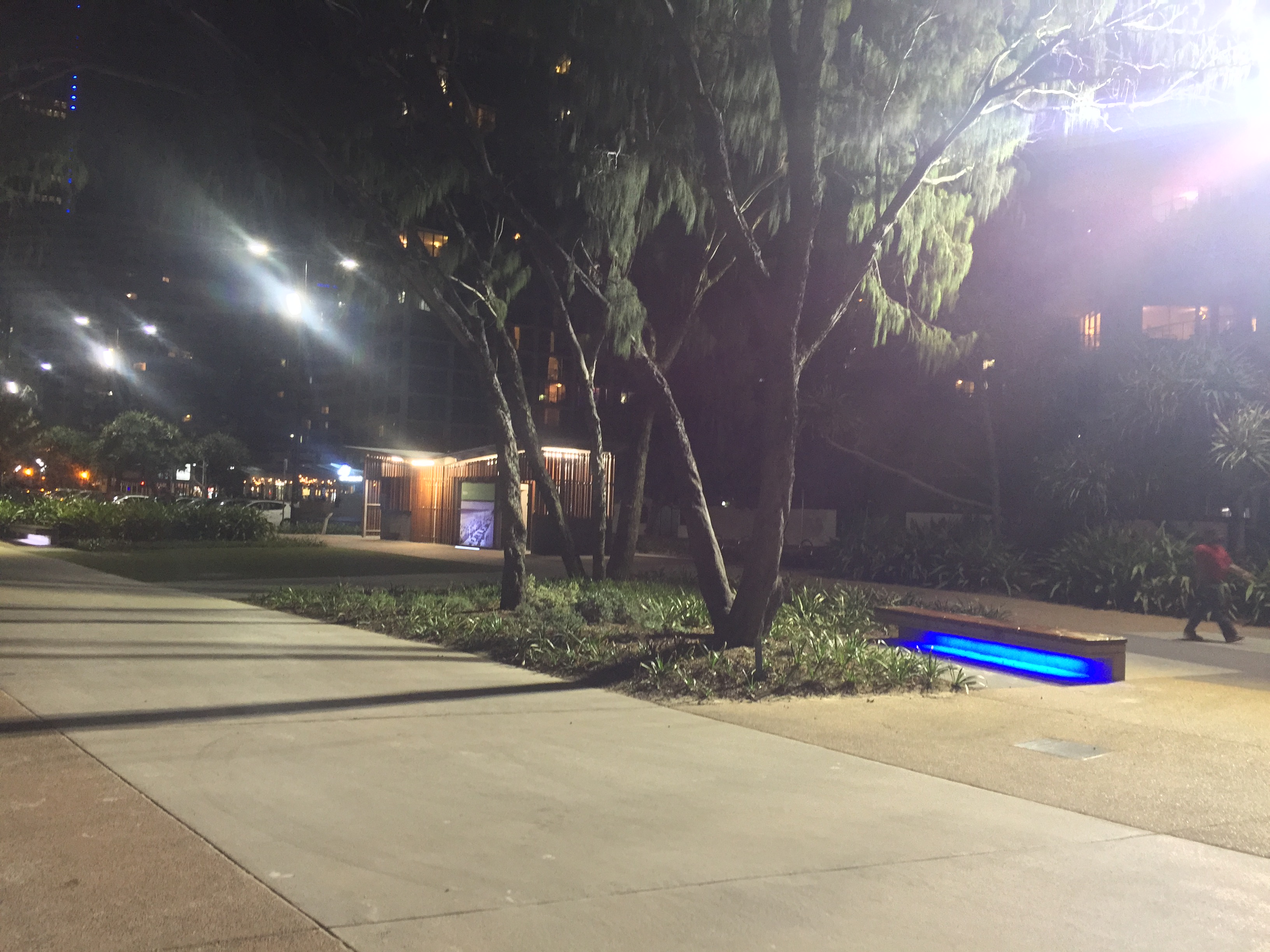
I can understand the importance of lighting the beach at night in such a high profile holiday destination such as Surfers Paradise. People choose to come here because of the famous beach so why leave the beach solely for daylight activities? The sand is just as soft white and clean at night as it is during the day.
But what is also equally important is the connection between the beach and the commercial precinct. The space where you cross the road from the hotels you're staying in and make your way along the foreshore boardwalk.
The problem is walking along the boardwalk at night is unbearable due to the glare from the flat panel LEDs . These panels are asked to light everything from the curbside to the high water line.
COST IS THE DRIVING FACTOR
I can understand the cost is the driving factor here (we already have poles here so let's just use them), but surely a compromise could be made. Floodlight the beach by all means but the boardwalk and the plants & shrubs and landscaping bordering it should defined differently. By separating the different spaces with light you define the space and its use.
As film and TV lighting designer you soon learn that it's important to use different light sources for different scenes within the same overall scenario, for example if you want to light a portrait of someone sitting in a chair and light the wall that the chair rests against as well you might be tempted to think that one light can do both things, but if you want the wall to have texture or relief you need to have the light source oblique from the point of view of the viewers, but then the subject in the chair would be subject to harsh shadowing, the answer is to light the two planes separately.
The same process can be applied to landscape lighting. Define the dominant point of view, isolate the interesting elements with light, (or shadow) and create a tableau. Viewers will be enchanted.


